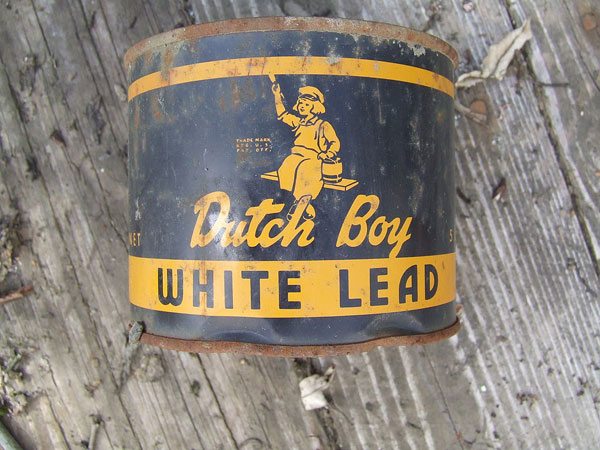
December 24, 2017; Plain Dealer
In the Plain Dealer story “Stay and fight, or move?” reporters Rachel Dissell and Brie Zeltner continue their series of stories about lead poisoning in Cleveland. This latest article in the “Toxic Neglect” series describes the dilemma of Janiece Moore, who received an eviction notice shortly after revealing that her son had been poisoned by lead. With nowhere to go to find lead-safe housing, Moore turned to the Legal Aid Society of Cleveland (LASC) to represent her and oppose her landlord’s eviction action. A new grant from the Mt. Sinai Health Care Foundation made it possible for LASC to raise a retaliation defense on Moore’s behalf in Cleveland housing court.
As a practical matter, when a tenant ends up in housing court, the summons dissipates the family’s fear of retaliation. The choice is resist or become homeless. Fighting lead in housing court means flipping the script, because usually tenants in eviction court are unrepresented. However, with the help of a defense attorney, owners may find it hard to hide behind a corporate veil or a hired manager. Suddenly, tenants’ attorneys can do discovery and raise defenses.
For LASC, the defense is one part of a bigger campaign against childhood lead poisoning: “Legal Aid Society of Cleveland took on the Moore family’s case, and will take on an estimated 1,300 similar cases in the next two years as part of a new strategy to help low-income families stay in place or move to safer, healthier homes.”
At LASC’s annual meeting in December, Executive Director Colleen Cotter brought a crowd of 1,100 supporters to silence with a somber discussion of the ongoing crisis of lead poisoning in Cleveland. Cotter announced a new initiative against lead poisoning using the courts: “Legal Aid will ‘use the power of the pocketbook’…to compel private landlords to identify and fix problems like lead hazards rather than face costly fines. The strategy includes making sure state and local authorities follow lead hazard laws.”
The absence of any practical way for low-income residents to find lead-safe housing in Cleveland is underscored by the facts of Moore’s case. Twice since the diagnosis of lead poisoning, Moore has located alternative rental housing only to discover that the new units couldn’t pass the Housing Quality Standard inspections. Cleveland has had a lead-safe registry since 2005, but not a single owner has come forward to register.
Sign up for our free newsletters
Subscribe to NPQ's newsletters to have our top stories delivered directly to your inbox.
By signing up, you agree to our privacy policy and terms of use, and to receive messages from NPQ and our partners.
Moore’s case is not LASC’s first foray into lead litigation. Last year, the LASC lead team asked the Ohio 8th District Court of Appeals to compel the City of Cleveland to follow through on its duties to enforce lead laws. Under state law, the Cleveland Health Department is responsible to carry out inspections of properties where a child has been poisoned and to require property owners to remediate the lead hazards.
Legal service organizations in other cities are also using litigation in support of lead-poisoned families. For example, the New Haven Independent reports that its city legal aid agency successfully sued the city for failing to relocate a child who was poisoned in a city-inspected home that was inspected by the city. Another recent case of municipal neglect in New York City underscores why litigation is often required to propel real change. Nonprofit law firms and philanthropic foundations can provide vital support to this work.
As a Toledo Blade two-part series makes clear, the failure of local health departments to enforce lead remediation orders is widespread. Part one of the series focuses on the experience of a family in suburban Lakewood, Ohio, where the Cuyahoga County Board of Health failed to prevent re-rental of a property known to contain a lead hazard. Part two of the series features cases from Cincinnati and Columbus that offer other examples of homes with known lead hazards being re-rented to tenants or sold to unsuspecting buyers. Reporter Lauren Lindstrom’s series led to an editorial in the Blade which demanded that residents be much better protected from lead poisoning.
Connecting eviction and lead prevention together makes sense from a political standpoint. Eviction is more like lead poisoning than it is like the more celebrated opioid epidemic. Like lead, eviction undermines its victims with effects that show up slowly—reduced school performance, family instability, and social isolation. Like lead poisoning, fighting eviction means both helping survivors and reducing families’ risk of being made a victim. It’s probably no coincidence that the Cleveland Plain Dealer, which has nurtured the “Toxic Neglect” series for over two years, is now challenging Clevelanders to read and discuss Matthew Desmond’s 2016 prizewinning bestseller Evicted in 2018.
Before being banned in 1978, the use of lead in painting residences was common. In Cleveland, where over 80 percent of the rental housing was built before 1978, advocates and planners assume that there will be lead present in almost all rental units. The simplest solution is to make these homes “lead safe” through encapsulation that keeps the lead hazard away from the children’s living space. But until government, owners, and the civic community act affirmatively, the threat of litigation might at least encourage some owners to act to avoid poisoning more children.—Spencer Wells













